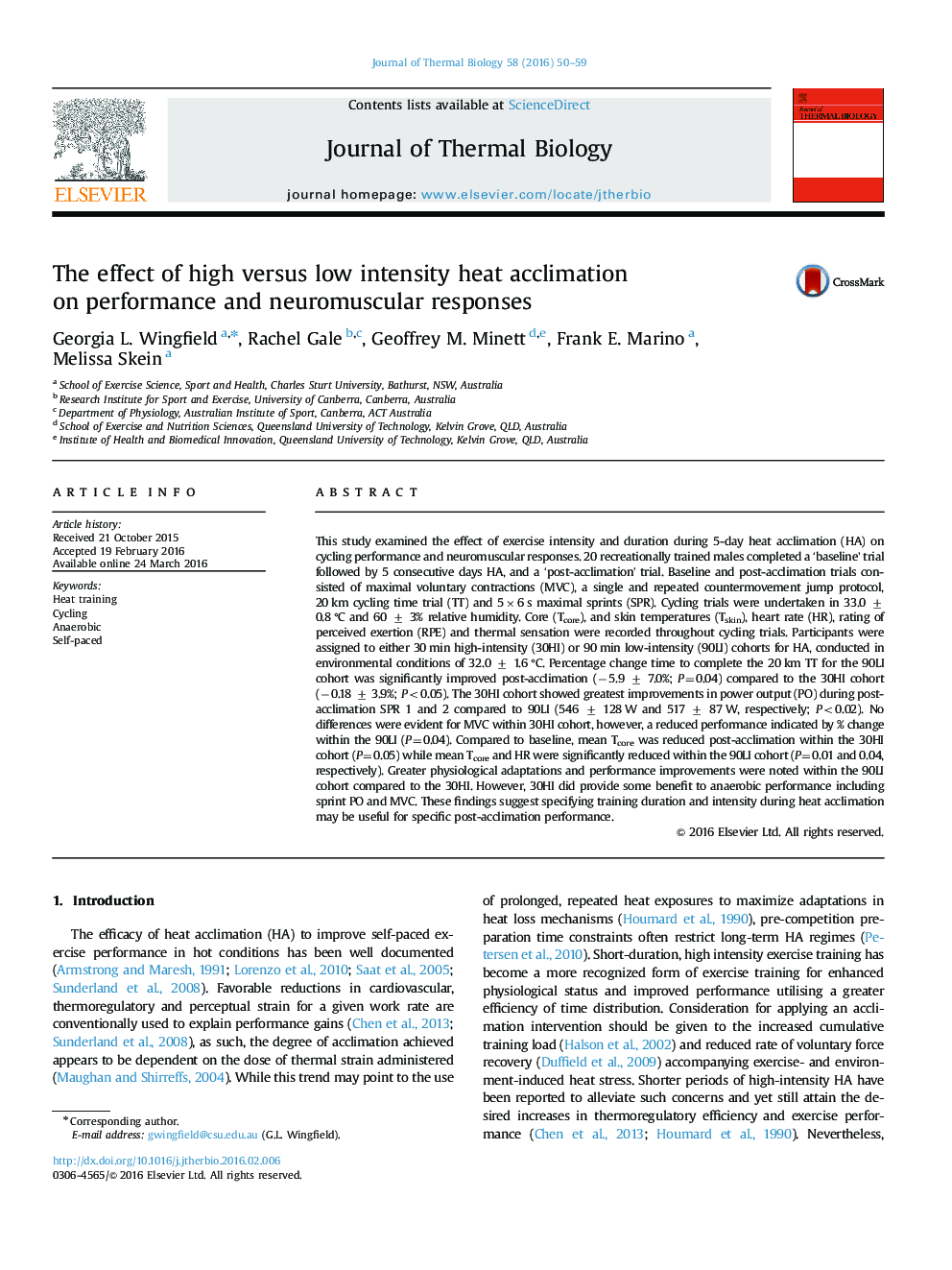| کد مقاله | کد نشریه | سال انتشار | مقاله انگلیسی | نسخه تمام متن |
|---|---|---|---|---|
| 2842659 | 1571088 | 2016 | 10 صفحه PDF | دانلود رایگان |
• We examine the effect of neuromuscular adaptations to heat acclimation.
• We examine acclimation training specificity on subsequent performance.
• Following five days training long duration, low intensity peripheral fatigue may be evident.
• Acclimation training type can be modified for elements of sport specificity.
This study examined the effect of exercise intensity and duration during 5-day heat acclimation (HA) on cycling performance and neuromuscular responses. 20 recreationally trained males completed a ‘baseline’ trial followed by 5 consecutive days HA, and a ‘post-acclimation’ trial. Baseline and post-acclimation trials consisted of maximal voluntary contractions (MVC), a single and repeated countermovement jump protocol, 20 km cycling time trial (TT) and 5×6 s maximal sprints (SPR). Cycling trials were undertaken in 33.0 ± 0.8 °C and 60 ± 3% relative humidity. Core (Tcore), and skin temperatures (Tskin), heart rate (HR), rating of perceived exertion (RPE) and thermal sensation were recorded throughout cycling trials. Participants were assigned to either 30 min high-intensity (30HI) or 90 min low-intensity (90LI) cohorts for HA, conducted in environmental conditions of 32.0 ± 1.6 °C. Percentage change time to complete the 20 km TT for the 90LI cohort was significantly improved post-acclimation (−5.9 ± 7.0%; P=0.04) compared to the 30HI cohort (−0.18 ± 3.9%; P<0.05). The 30HI cohort showed greatest improvements in power output (PO) during post-acclimation SPR 1 and 2 compared to 90LI (546 ± 128 W and 517 ± 87 W, respectively; P<0.02). No differences were evident for MVC within 30HI cohort, however, a reduced performance indicated by % change within the 90LI (P=0.04). Compared to baseline, mean Tcore was reduced post-acclimation within the 30HI cohort (P=0.05) while mean Tcore and HR were significantly reduced within the 90LI cohort (P=0.01 and 0.04, respectively). Greater physiological adaptations and performance improvements were noted within the 90LI cohort compared to the 30HI. However, 30HI did provide some benefit to anaerobic performance including sprint PO and MVC. These findings suggest specifying training duration and intensity during heat acclimation may be useful for specific post-acclimation performance.
Journal: Journal of Thermal Biology - Volume 58, May 2016, Pages 50–59
